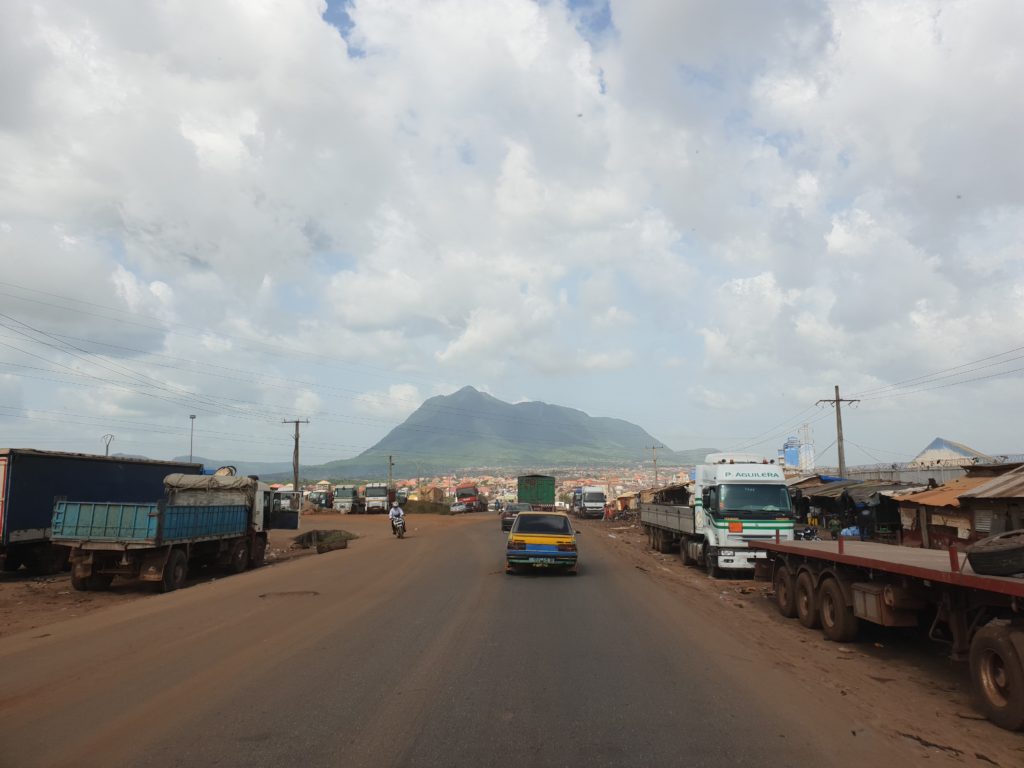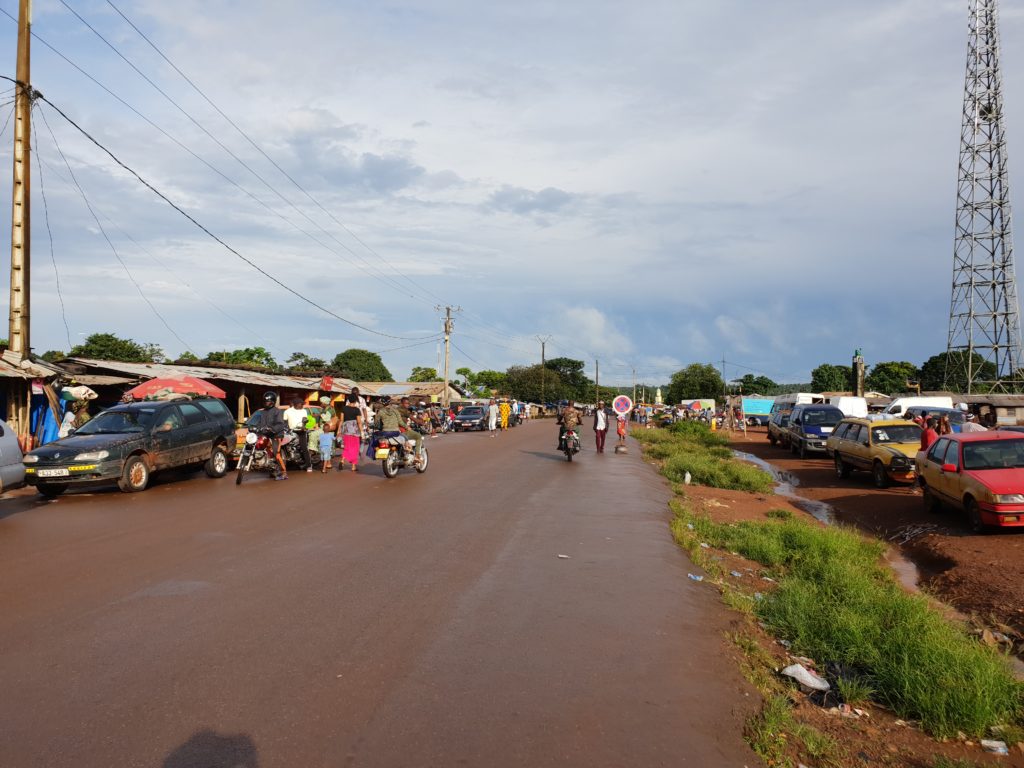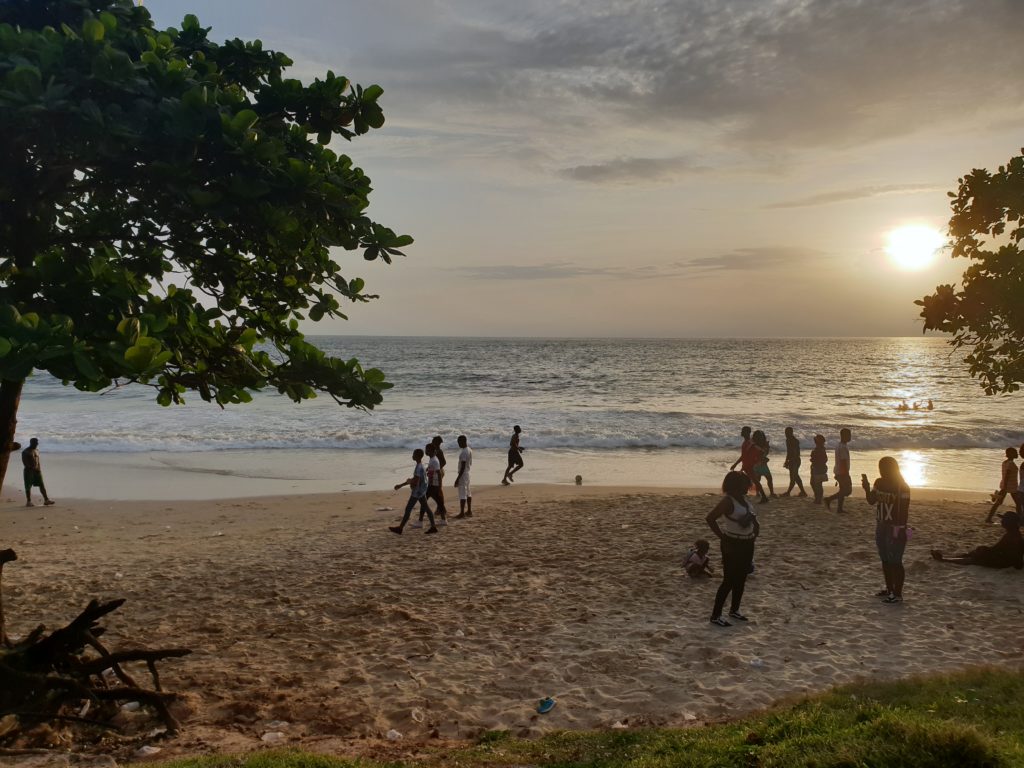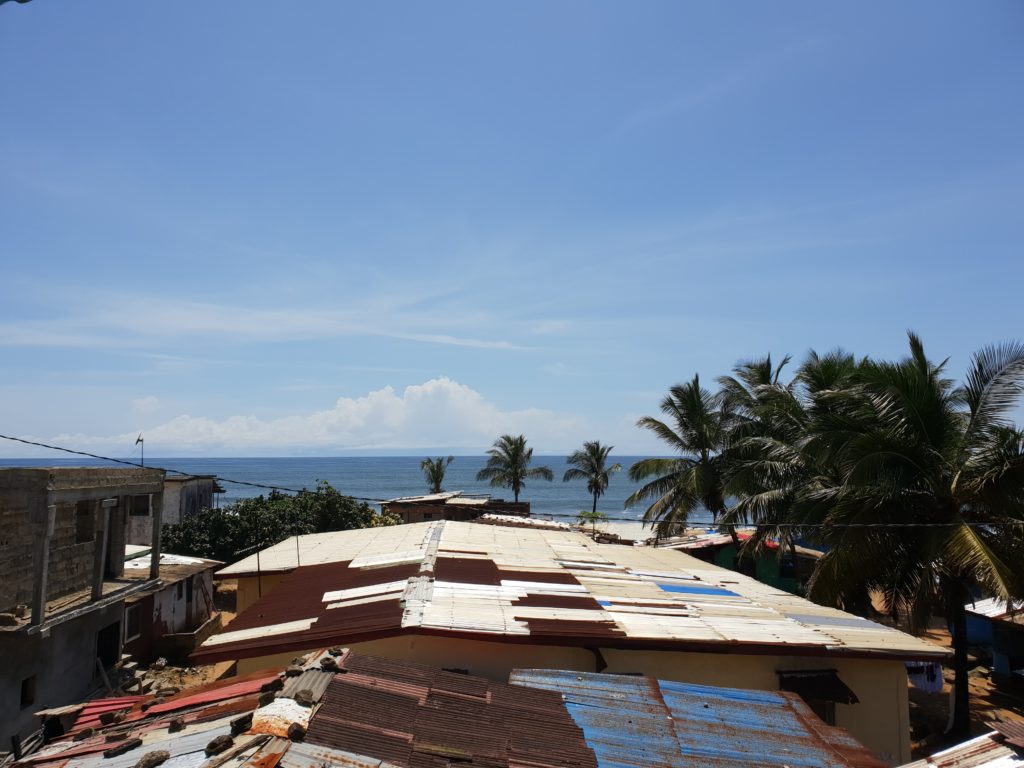
Guinea all your Lovin’
Last week, I continued my journey south through three extraordinary West African nations until my beleaguered arrival in the Guinean conurbation of Conakry. This week, I follow the coast from capital to capital, visiting countries with recent histories they would rather forget.
Day 15 – Conakry, Guinea
Conakry. Not a city with the best of reputations (in fact I was told to avoid it at least twenty times), but in my experience things are never as bad as they say. Maybe I was being optimistic, as today was my birthday, and I was desperately looking for some positives? Well, upon very first glance, its reputation precedes it. Like a city from Mad Max, the filthy, rubbish-laden streets are the grimmest I have witnessed so far. And the endless greasy garages and gloomy workshops provide a foreboding backdrop, whilst polluting the city air with a dense, Beijing-like smog.
However, I was going to give it every opportunity to surprise, and I quickly discovered that the centre of the capital is nowhere near as morose as its outskirts. Conakry is a situated on a very long and narrow peninsula, which does make getting to its tip (in this case the heart of the city) rather difficult – especially in rush hour. But once there, I must say, it was not overly unpleasant. Not too dissimilar to a Dakar, and far more to see, as I caught word that something quite wonderful exists at its core: a bloody museum!
The grandiosely-named National Museum of Guinea wasn’t quite the Smithsonian Museum of Natural History, but a small room filled with about thirty to forty artefacts of questionable historical significance. However, the endless enthusiasm of my guide (despite the fact I couldn’t understand a word he was saying) really fulfilled my cultural cravings. Unfortunately, photos inside were not permitted, but the same could not be said of the cathedral opposite – I was on a roll here. The Cathedral of Saint Marie wasn’t exactly the Sistine Chapel either, but it was very impressive for the region (and even visited by the pope a few years ago). More of the same, please.
Day 16 – Conakry, Guinea
My plan for the day was to hop over to an island located just off Conakry’s tip, of which I had heard many encouraging things. However, by the time I had made it from my host’s house to the harbour, most of the pirogues had already gone (and trying to negotiate a price being the only tourist is not an easy task). This was not a disaster, however, as I was quite happy to remain in the city centre and meander.
Now, I’m not sure what this place has done to me, but even the rubbish was starting to look less unappealing. It’s quite possible that all the terrible tales I had heard actually did the city a favour – it is nowhere near as awful as ‘they’ say. Plus, my host, Mr Diallo, is about as virtuous and as helpful as any person I have met yet (making sure I am well hydrated with copious cups of British tea and biscuits). I may actually miss the Mad Max vibe as I continue down the coast tomorrow (although maybe not).
Day 17 – Conakry, Guinea to Pamalap, Guinea
On first glance, travelling two hundred and fifty kilometres between two major capital cities didn’t seem like it should pose much of a problem. Three hours Mr Diallo said (and I already trust him with my life). Well, let’s just say he made a slight error on this one. It began with his friend attempting to find me a bus leaving for Freetown (my next destination) within the colourful carnage of Conakry market. Loaded with my belongings (and with the bazaar teeming with people, livestock and all manner of unsuitable vehicles), I did think I might be crushed to death at one point – or at least pass out from the inescapable exhaust fumes.
It took us what felt like hours to find a van going south and I swiftly, and sweatily, hopped on board. Now, if there is one thing I have learnt about Guinean people it is that they like to shout. An interaction you or I may deem a blazing row (borderline verbal assault), is just how they say good morning. And on the bus to Freetown, I had a full Eastenders episodes-worth of hollering. This escalated when our pleasant but insane driver decided to drive through a watery pothole the size of Lake Superior, subsequently drowning our vehicle.
Unable to get out of first gear, we crawled to the border with Sierra Leone, reaching it in complete darkness – several hours after it had closed (three hours to Freetown my arse). I, therefore, had to find a motel in a Guinean border town with no functioning phone or brain. With some help from my fellow stranded passengers, we located a dusty inn and I settled down for the evening (along with my cheery roommates: rat, cockroach and massive bloody spider). To top the night off I electrocuted myself on a dodgy socket when attempting to connect the pre-historic fan (almost swallowing the airborne cockroach in the process). What a day.
Day 18 – Pamalap, Guinea to Freetown, Sierra Leone
Having hardly slept a wink (my pet arachnids definitely got more shut-eye, or eyes, than I), I wasn’t overjoyed to learn that we would have an indefinite wait for the van to be repaired. Which, as I have learned about West Africa already, could genuinely mean indefinitely. Border towns (in any country) are never the most pleasant of places, with boisterous currency traders and trigger-happy police praying for something to kick off. This one wasn’t much finer. Having lost a day already (and with an itinerary tighter than the girdle of a Baptist minister’s wife at an all you can eat breakfast buffet), I was keen to get a move on.
A further six hours drifted by until, finally, the driver decided to call it a day. He mustered several taxis for his stricken passengers and paid them to take us to Freetown (why on earth he didn’t do this six hours ago is rather galling). The end. Well, not quite, as I was dropped off about thirty kilometres outside of the city and needed a further two buses to get within walking distance of my host’s house. Parched and famished, I quickly abandoned my baggage and went in search of sustenance on Lumley Beach – the jewel of the capital.
Upon catching a glimpse of the golden sand and shimmering Atlantic, I immediately felt soothed, and not at all like the exhausted heap I was. Within seconds of hopping out of my keke (Sierra Leone’s answer to the tuk-tuk), Freetown became my favourite location thus far. A pristine beach lined with bars, barbeques, cafes and local restaurants, the boardwalk was a hive of vibrancy and joy – you know, the exact opposite of Wind Street on a Friday night.
Day 19 – Freetown, Sierra Leone
Sierra Leone. Now, what enters your head when you hear this remarkable nation’s name? If it is warfare, drugs and diamonds you would have been correct… twenty years ago. However, since the Blood Diamond War came to an end, not a bullet has been fired in anger (the words of my guide at the National Museum). As he showed me artefacts and regalia from the countries rather colourful past, he explained the full extent of the horrific war crimes that occurred in the 90’s and early 00’s. I will save you the sickening details, but the people of this country are certain that war will never ever return.
Just across from the National Museum rests the colossal Cotton Tree, a historic symbol of the country which, legend has it, was where the first freed slaves gathered and founded the city of Freetown. It absolutely dominates the skyline, a welcome change from a modern skyscraper or an inflatable Trump. It is believed to be the oldest cotton tree in the world, beating all those other infamous cotton trees you’ve heard of by years, if not decades.
Well, The National Railway Museum of Sierra Leone wasn’t right at the top of my cultural bucket list (it was third behind Reykjavik’s Phallological Museum and Barcelona’s Funeral Carriage Museum), but boy was I pleased I made the visit. Sarcasm aside (for a second), the rich history of the country’s railway service was almost lost to time and war when it closed down in 1974. Indeed, even the locals had long forgotten its entire existence until a certain British colonel happened upon a collection of timeworn locomotives in an abandoned warehouse and decided to open up a cracking museum. Good on you sir.
Day 20 – Freetown, Sierra Leone to Monrovia, Liberia
Unfortunately, my ridiculous schedule (which I spent far too little time formulating) meant I had to be back on the road at first light in an attempt to get as close as I could to my next nation: Liberia. I haven’t been all that lucky with regards to transport thus far but today certainly bucked that trend. As our vastly overfilled vehicle left the Sierra Leonean capital, I discovered that three of my fellow passengers were also heading to Monrovia (the Liberian capital) in one day. Having planned it to take two, this was a big win.
Well, I put my day in their hands, and it led me to some interesting places. Not least because their preferred method of transport was motorbike. Given the ominously dark skies, I had my reservations about loading all my valuables on the back of a flimsy scrambler and skimming through the mud across Sierra Leone. However, it turned out to be a quite extraordinary tour of the countries captivating communities and stunning scenery. Not even having to pay my first bribe at the border (for a fake cholera stamp) could dampen my spirits as I, muddied and scorched, arrived in country number six.
Day 21 – Monrovia, Liberia
Things took a distinctly U.S.A vibe as I arrived in the Liberian capital late last night. Just as Sierra Leone was where the British sent their freed slaves at the end of the eighteenth century, Liberia was where the United Staters sent theirs. Everything seemed far bigger and brasher here than in their northerly neighbours, with the local accent sounding more The Bronx than West Africa. The laid-back ambience of Freetown was a distant memory already.
Despite being built right on the pristine Atlantic coast, Monrovia hasn’t yet made the most of its paradisiacal location. I mean I could see the beach, but it was not set up in any way for travellers to visit (without drawing a stadium’s worth of onlookers). Instead, my host (a former member of the Liberian government) treated me to a grand dinner on the house and an interesting conversation on the political situation in the country. Safe to say he is not the biggest fan of ex-footballer turned president George Weah. To be honest, I was never a fan of his goal celebrations either.
N.B. – Two days after I left Conakry, a demonstration against the despotic, power-hungry president Alpha Condé turned bloody as at least four people were killed by police firing into crowds to disperse opposition supporters. I would like to offer my solidarity to those I met who were taking part in those demonstrations, and love to those who lost. #standagainstalpha
J







































